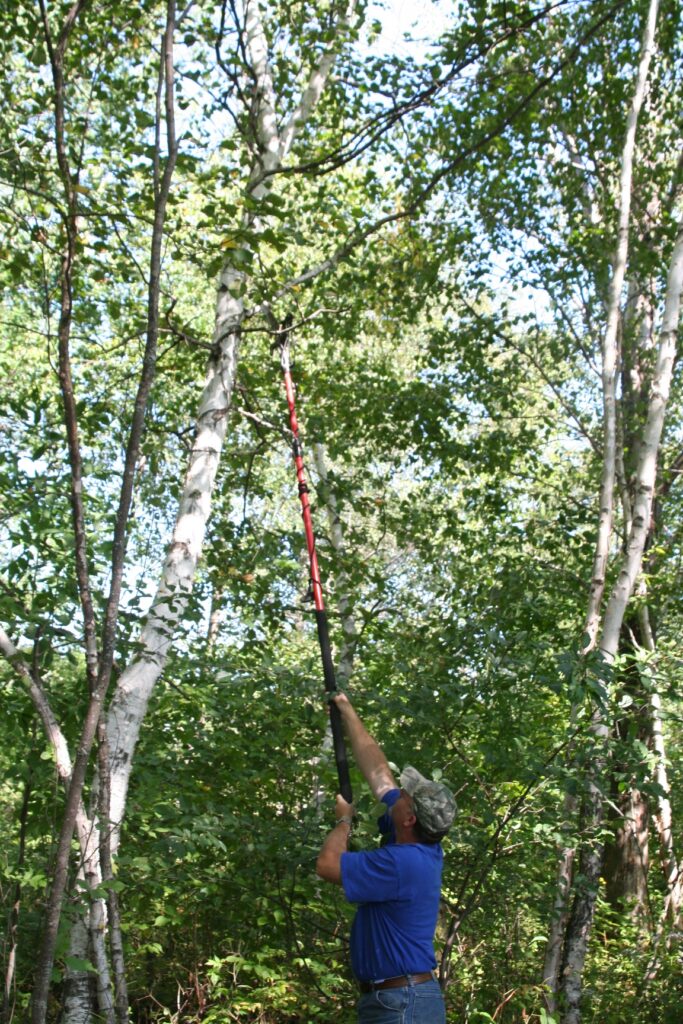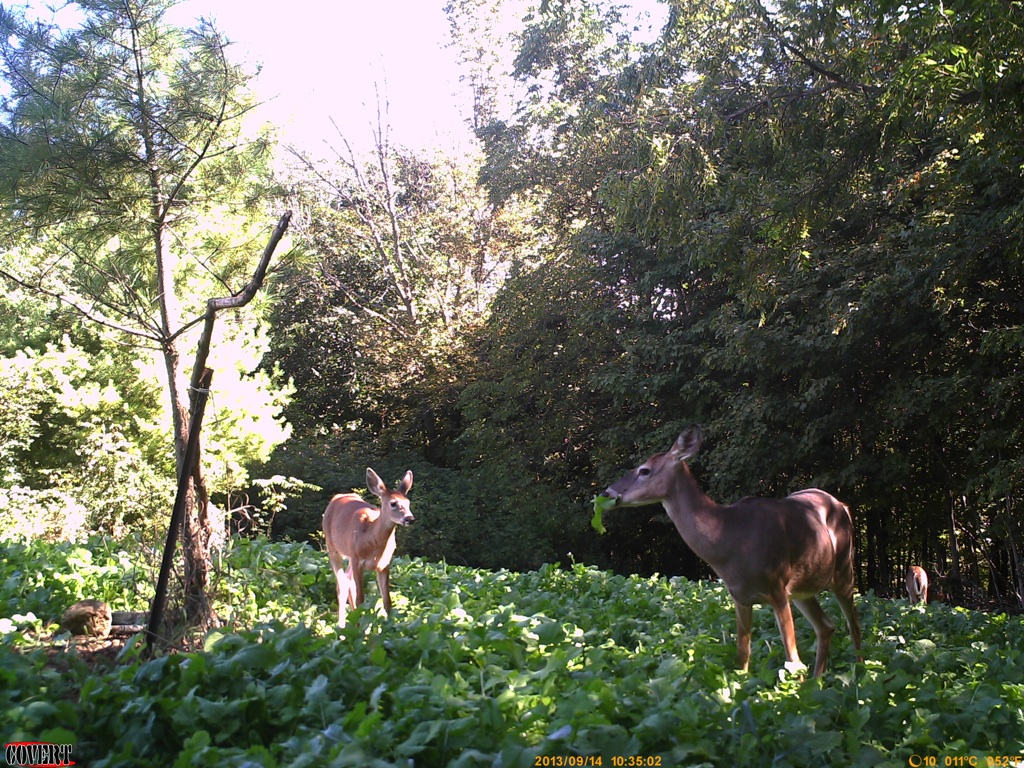You can increase your chances of shooting a nice buck this fall by doing some preliminary work in the summer.
By Bernie Barringer
Like most deer hunters, I think about whitetails year ‘round, but most of my preparation activity is done just before the season opens and most years I hunt from opening day right through the final bell. However, I have found that there are a few things I can do during the summer months that will significantly up my odds of shooting a buck in the fall.
Now, I like summer fishing as much as the next guy, but I will spend a couple weekends on deer hunting in the summer and it pays off big time. I encourage you to take some time to do these five tasks and I think you will agree that they are well worth it.
Trim shooting lanes
Saplings and brush grows up around your treestands every year. If you wait till the last minute to trim it, you may alert the deer to your presence. They know their woods intimately, and some fresh cut trees lying around right before the season opens might put a mature buck on edge.

In the summer, you don’t have to worry about drops of sweat on the ground and you can pile the trimmings in a way that will move the deer past your stand. Using a pile of brush to gently guide movements only works if it has been done well ahead of time. It’s worth doing.
Improve bedding areas
My friend and Iowa big buck nut Jon Tharp taught me this one. Jon does his hinge cutting to improve the amount of sunlight getting to the forest floor in the winter, but in the summer, he actually creates deer beds. That’s right, individual beds where he wants the deer to lie down.
Bucks do not like to lay on sticks and stones, so you can make a nice bed with a rake by clearing out a small area. Bucks like to put their back against some kind of structure just like a big bass, so deer beds are best made with some kind of cover next to it. A downed log or deadfall tree is great; a brushpile works as well.

Bucks will bed where they feel secure and you can create a feeling of security for them that will keep them from wandering over to the neighbors by making a group of individual beds that allow them to see what’s in front of them and have a barricade behind them. By doing several at differing angles, you allow the buck to use the one he prefers in various wind directions.
Plant a throw-and-grow brassica food plot
You don’t have to be a farmer to plant a food plot. There are a couple that work very well with little effort. You can till up a small clearing in the woods and rake in some brassica seeds. The best time to do this is early August right before a rain. Once the sugar beets, turnips, radishes and rape gets established, it will grow there without much traffic. These plants become more palatable after a hard frost turns the starches in them to sugar. Then the deer pile into them during the early archery season.
Another easy plot can be created by raking these seeds right between the rows of corn in front of your treestand. With simple permission, most farmers will allow this. When the corn is harvested, the brassicas are sitting there ready for the hungry deer. These little secret spots are often at their peak in perfect timing for the October archery seasons.

Keep those scouting cameras working
Far too many hunters wait until just before hunting season to put out their scouting cameras. I have a half-dozen cameras working all summer. I have them on mineral sites and in bedding areas. Not only is it fun to watch the bucks’ antlers grow and the fawns rapid daily maturing, but you can learn a lot about the deers’ preferred travel corridors. This is important information that will help you pattern the deer later on.
In the summer, you can be a little more aggressive about moving about in areas the deer are using. While you might never consider violating a buck’s sanctuary during the fall, you can safely check a camera in there every couple weeks. Spray down with Scent Killer to reduce your intrusion and check the cameras no more than twice a month.
Additionally, cameras help keep tabs on which bucks are in the area. By taking an inventory of them, you can make a “hit list” or at least have a feel for the property’s potential. Without a knowledge of what bucks are living in the area, you might decide to hold out for a 140 class buck or better when there aren’t any. Don’t put the cameras away.

Spend time behind a spotting scope
By the end of July, bucks have their headgear nearly fully grown. At this time, they may be more visible during daylight than any other time of the year. They readily feed on soybeans and alfalfa during the last couple hours of daylight. Find a high point where you can mount a spotting scope to your truck’s window and watch their evening movements into the fields. This will help you keep track of the bucks and where they like to enter the field in the prevailing conditions. Take not of the wind direction and where the bucks enter the fields during these conditions. This info will help you choose stand locations.

Bachelor groups of bucks are together at this time and nothing makes your heart beat faster than seeing a bunch of nice bucks together in a field you will be hunting in just a few weeks.
So don’t spend all your time lying by the pool in the summer. You could be missing out on some enjoyable work that could pay off in a big way when the season rolls around.
